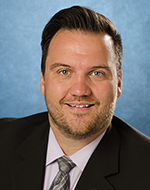Page Content
 |
 |
|
|
Ian Hanna
Government and
Stakeholder Relations,
Saskatchewan
Teachers’
Federation |
Jonathan Teghtmeyer
Associate Co-ordinator — Communication,
Alberta Teachers’ Association |
|
|
Taxes are one helpful way to pay for education
We want to tell you a story about a faraway land, a land where the sun almost always shines and the people are prosperous.
It’s a land where the only downside of having fruit trees in your backyard is that they block the view of the mountains and the oceans.
This is not a mythical land. It’s California, the world’s fifth-largest economy and bigger than all of the United Kingdom. California now has a $9-billion surplus in its 2018-19 state budget after years of running massive deficits. And it’s a state where, a few years ago, they made a deliberate decision to raise taxes to improve public education.
Former governor Jerry Brown, who retired this month, decided he was tired of hearing there was no money for education. In a speech on Nov. 6, 2012, Brown said that without more money for schools, the California dream was over.
“This is about people choosing on or off ... money into our schools or money out of our schools. It’s really stark. The California dream is built on great public schools and colleges and universities.”
The mechanism Brown endorsed to fix this problem was California Proposition 30. It called for personal income tax increases over seven years on people earning more than $250,000 per year. There was also a sales tax increase of 0.25 per cent.
Proposition 30 passed in the fall of 2012 by more than 55 per cent. The sales tax increase was allowed to expire in 2016. The higher income tax portions of the plan were extended for another 12 years when another vote was held in 2016. Since January of 2013, Proposition 30 has generated more than
$31 billion for California schools. The impact has been significant.
According to the independent California Budget and Policy Center, per-student spending in K-12 classrooms has increased more than $1,300 from 2012-13 to 2016-17 (adjusted for inflation).
The center also says the number of students per teacher has dropped since Proposition 30 was adopted.
According to the California Federation of Teachers, the thousands of per-year layoff notices in education have slowed to a trickle.
In the Los Angeles Unified School District, Proposition 30 provides 12 per cent of annual funding. A deliberate decision was made to restore funding to arts programs and programs to support the most needy students. Statewide, community colleges have been able to restore hundreds of class sections after the cuts were reversed.
Here in Alberta, funding for education has not kept up with rising inflation and rapid student population growth. From 2009-10 to 2017-18, the student population increased by 19 per cent and costs rose by
15 per cent. Funding has not kept pace and, as a result, class sizes have risen and students are not getting the supports they need.
In the last school year, 81 per cent of K-3 classes were larger than guidelines established in 2003 by Alberta’s Commission on Learning, and all but five school jurisdictions exceeded the targets. These averages also don’t fairly represent the considerable number of classes that are significantly larger than the average. Since 2002, the proportion of core classes with 40 or more students has grown by 600 per cent.
The Alberta government has been running deficits for many years, and calls for more classroom support are too often met with a political response that there is no money.
Well, there’s no money because of the deliberate tax decisions that have been made over the years. Alberta has the lowest taxation rates in the country, and we are the only province without a sales tax. If Alberta used the tax rates being used by the conservative government in Saskatchewan, we would raise
$11.3 billion more. With these reasonable taxation rates, Alberta would still be tied with B.C. and Saskatchewan for the lowest taxes in Canada, but it would have a $2.5 billion surplus instead of a $9-billion deficit.
No one wants an education system for their children that is starved for operational funds. No one wants education funding cuts that stretch out over several years, particularly when there are more students.
So, if you meet a politician who says there’s no extra money for education, tell them to look in the mirror to find out why this has happened.
Tell them about this place where the most well-off were asked to pay a bit more to make schools better for everyone.
Tell them about a place where taxes were raised, the popularity of political leaders rose and the budget is now in surplus.
Tell them about a place where class sizes are smaller and arts and music programs flourish.
It’s not a myth. It’s California.
We’ll get there too if we all can agree that Alberta’s dream is also built on great public education. ❚
This column was adapted from one that first appeared in the Dec. 12, 2018, issue of the Saskatchewan Bulletin, published by the Saskatchewan Teachers’ Federation.
